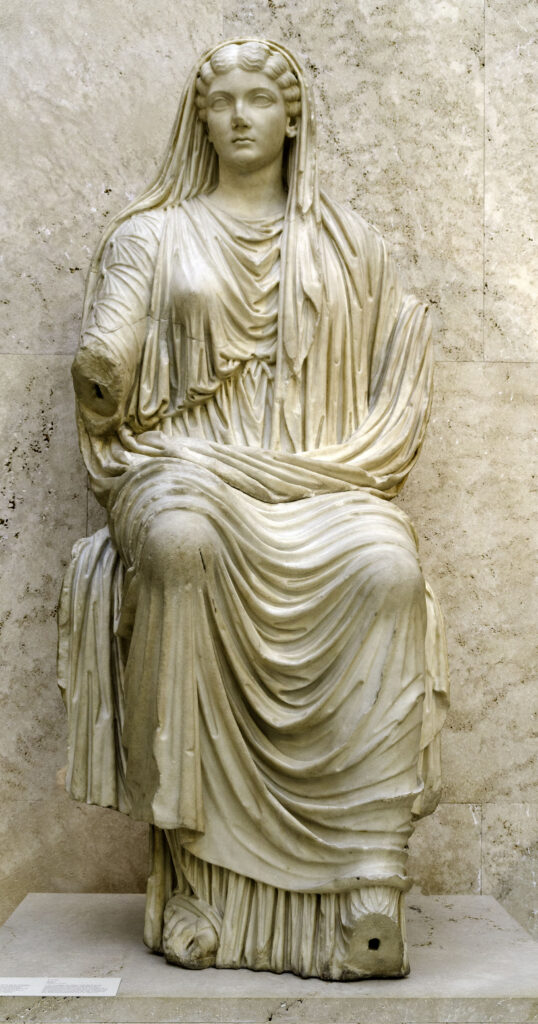When we delve into the wardrobe of Roman women, we uncover a tapestry of fashion that reflects their societal roles, status, and the prevailing trends of the time. Let’s embark on a journey through history to explore what Romans women’s clothes were like!
Stolas and Pallas
The toga stands out as one of the most iconic garments in Roman history. Reserved exclusively for men, this large, draped cloth served as a symbol of citizenship and authority. Women, on the other hand, did not wear togas in daily life but donned similar draped garments called stolas and pallas. These garments were crafted from fine fabrics and adorned with intricate designs, reflecting the wearer’s social standing and wealth.

Tunics
For everyday wear, Roman women favored the simplicity and comfort of tunics. These garments were typically made from lightweight linen or wool and featured simple designs. Tunics came in various lengths, with longer tunics being worn by women of higher social status. Paired with a belt or sash around the waist, tunics provided both style and functionality, allowing women to move freely while maintaining an elegant appearance.
Fabrics and Colors: A Palette of Possibilities
Luxurious Fabrics
Roman women had access to a wide array of luxurious fabrics, including silk, wool, linen, and cotton. Silk, in particular, was highly prized for its softness and sheen, but it was also expensive and often reserved for the elite. Wool and linen were more common choices for everyday attire, offering durability and comfort in varying climates.
Vibrant Colors
The Romans had a penchant for vibrant colors, and their clothing reflected this love for bold hues. Women’s garments were often dyed in rich shades of purple, red, blue, and green, with intricate patterns and embellishments adding to their allure. These colorful ensembles not only showcased the wearer’s taste but also served as a form of self-expression in Roman society.
Accessories: The Finishing Touches
Jewelry
No Roman outfit was complete without a touch of jewelry. From intricate gold necklaces to gemstone-studded bracelets, Roman women adorned themselves with an array of accessories to enhance their beauty and status. These lavish adornments served as symbols of wealth and sophistication, with each piece reflecting the craftsmanship and artistry of the era.

Footwear
When it came to footwear, Roman women opted for both style and comfort. Sandals were the footwear of choice for everyday wear, featuring sturdy soles and decorative straps that crisscrossed over the feet. For more formal occasions, women wore intricately embellished sandals crafted from fine leather or adorned with jewels, adding an extra touch of glamour to their ensemble.